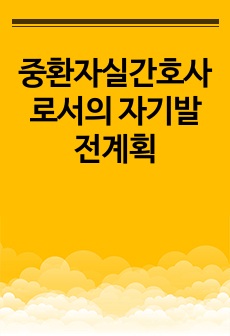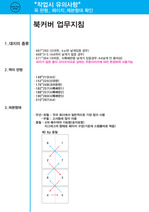The Role of Museum for Intangible Heritage Preservation in Korea
* 본 문서는 배포용으로 복사 및 편집이 불가합니다.
서지정보
ㆍ발행기관 : 한국박물관학회
ㆍ수록지정보 : 박물관학보
ㆍ저자명 : Hyun Mee Yang
ㆍ저자명 : Hyun Mee Yang
목차
Ⅰ. IntroductionⅡ. The Preservation System of Intangible Heritage
Ⅲ. Relationship between Museums and Intangible Heritage
Ⅳ. The Role of Museums for Intangible Heritage Preservation
Ⅴ. Conclusion
References
한국어 초록
I would like to discuss about the relation between museum and the preservation systemof intangible heritage related to the traditional craft arts in Korea. Korea has managed themost creditable preseπation system of intangible heritage in the world. It was the modelwhen UNESCO designed “Proclamation of Masterpieces of the Oral and IntangibleHeritage of Humanity" in 1997.The Scope of intangible heritage is very broad. It is often difficult to dec?de what topreseπe because it varies in accordance with what point of view to take. In Korea,Cultural Heritage Preservation Act defines intangible heritage as “drama, music, dance,and craft skills etc. that are the outcomes of the intangible culture and have historical,artistic, and acadernic values". According to the Act, types of intangible heritage areclassified into two categories that are, perfoffiling arts and craft arts.The preservation system of intangible heritage in Korea focuses on the support of thosewho have the traditional skills worthy to preserve . The governmental supports help themto maintain skills and hand over them to their successors. However, this system hasnothing to do with museum. Museum has related to the tangible moving heritage whilethe ethnography museums collect instruments, costumes and craft items that had beenmade or used by the predecessors. In such museums most secrets of the traditional skillsare hidden in the tangible objects. Fortunately there is a living history of the traditional craft skills in Korea. It is the national and regional intangible heritages. Museum hasdeveloped methods to conserve the tangible past. How museum can help preserve theliving intangible history?In order to preserve the traditional craft skills, museum has to transfer the tacitknowledge that masters have obtained through the long experiences into the explicitknowledge. For examples, that is how to get and treat raw materials, how to make anduse tools, how to design and create craft items etc. In most casesthe distribution of thiskind of knowledge has been confined to some successors and acadernic researchers.Museum can change this situation. But in order to preserve intangible heritage, museumhas to change its core activity from collecting objects to organizing knowledge throughconverting the tacit knowledge into the explicit knowledge. The most important activityrelated to production of knowledge is the research on the whole process of craft skillsand the life of masters. The process of systematization of knowledge produces not onlythe collections-raw materials, tools and craft works etc. but also the diverse types ofdocumentations-interviews, multi-media records and research papers etc. The traditionalmuseum regarded the latter as complementaty rather than the former. However in regardof intangible heritage, the latter may beas important as, or more important than theformer. At this respect, museum cannot help being combined with archive.This museum/archive is able to help masters to hand over the traditional skills to theirsuccessors, to provide useful information to academic researchers and to inspirecontemporaty craft artists. National Heritage Research Institute has been a crucial role inthese kinds of activities. But it is not enough in the era of knowledge-based society,because in such a society it is important for people’s welfare not only to produceknowledge but also to distribute and apply knowledge. Here is the essential role ofmuseum. Museum can make intangible heritage live in the cultural life of people throughthe diverse communication and marketing techniques adopted by it-exhibition,education, production of cultural commodity, tourism etc. There is the reason whymuseum has to combine with the preservation system of intangible heritage in Korea.Museum can make a living histoty live in our everyday life rather than in our memory.영어 초록
I would like to discuss about the relation between museum and the preservation systemof intangible heritage related to the traditional craft arts in Korea. Korea has managed the
most creditable preseπation system of intangible heritage in the world. It was the model
when UNESCO designed “Proclamation of Masterpieces of the Oral and Intangible
Heritage of Humanity" in 1997.
The Scope of intangible heritage is very broad. It is often difficult to dec?de what to
preseπe because it varies in accordance with what point of view to take. In Korea,
Cultural Heritage Preservation Act defines intangible heritage as “drama, music, dance,
and craft skills etc. that are the outcomes of the intangible culture and have historical,
artistic, and acadernic values". According to the Act, types of intangible heritage are
classified into two categories that are, perfoffiling arts and craft arts.
The preservation system of intangible heritage in Korea focuses on the support of those
who have the traditional skills worthy to preserve . The governmental supports help them
to maintain skills and hand over them to their successors. However, this system has
nothing to do with museum. Museum has related to the tangible moving heritage while
the ethnography museums collect instruments, costumes and craft items that had been
made or used by the predecessors. In such museums most secrets of the traditional skills
are hidden in the tangible objects. Fortunately there is a living history of the traditional craft skills in Korea. It is the national and regional intangible heritages. Museum has
developed methods to conserve the tangible past. How museum can help preserve the
living intangible history?
In order to preserve the traditional craft skills, museum has to transfer the tacit
knowledge that masters have obtained through the long experiences into the explicit
knowledge. For examples, that is how to get and treat raw materials, how to make and
use tools, how to design and create craft items etc. In most casesthe distribution of this
kind of knowledge has been confined to some successors and acadernic researchers.
Museum can change this situation. But in order to preserve intangible heritage, museum
has to change its core activity from collecting objects to organizing knowledge through
converting the tacit knowledge into the explicit knowledge. The most important activity
related to production of knowledge is the research on the whole process of craft skills
and the life of masters. The process of systematization of knowledge produces not only
the collections-raw materials, tools and craft works etc. but also the diverse types of
documentations-interviews, multi-media records and research papers etc. The traditional
museum regarded the latter as complementaty rather than the former. However in regard
of intangible heritage, the latter may beas important as, or more important than the
former. At this respect, museum cannot help being combined with archive.
This museum/archive is able to help masters to hand over the traditional skills to their
successors, to provide useful information to academic researchers and to inspire
contemporaty craft artists. National Heritage Research Institute has been a crucial role in
these kinds of activities. But it is not enough in the era of knowledge-based society,
because in such a society it is important for people’s welfare not only to produce
knowledge but also to distribute and apply knowledge. Here is the essential role of
museum. Museum can make intangible heritage live in the cultural life of people through
the diverse communication and marketing techniques adopted by it-exhibition,
education, production of cultural commodity, tourism etc. There is the reason why
museum has to combine with the preservation system of intangible heritage in Korea.
Museum can make a living histoty live in our everyday life rather than in our memory.
참고 자료
없음"박물관학보"의 다른 논문
 『사립미술관의 현실과 과제』에 대한 토론문 -결론에 대한 추가 및 세부 제언-3페이지
『사립미술관의 현실과 과제』에 대한 토론문 -결론에 대한 추가 및 세부 제언-3페이지 『용산 새 국립박물관의 성과와 과제』에 대한 토론3페이지
『용산 새 국립박물관의 성과와 과제』에 대한 토론3페이지 수집 2세대의 박물관 전시21페이지
수집 2세대의 박물관 전시21페이지 한국의 박물관, 현실과 과제16페이지
한국의 박물관, 현실과 과제16페이지 사립(私立)박물관을 생각한다9페이지
사립(私立)박물관을 생각한다9페이지 용산시대 국립중앙박물관 기획특별전과 전시콘텐츠 마케팅20페이지
용산시대 국립중앙박물관 기획특별전과 전시콘텐츠 마케팅20페이지 강원 영동지역 역사민속계 박물관의 유물관리 개선 방안 연구14페이지
강원 영동지역 역사민속계 박물관의 유물관리 개선 방안 연구14페이지 국립중앙박물관문화재단의 역할과 ‘극장 용’의 마케팅26페이지
국립중앙박물관문화재단의 역할과 ‘극장 용’의 마케팅26페이지 스토리텔링을 적용한 박물관 전시 구조에 관한 연구19페이지
스토리텔링을 적용한 박물관 전시 구조에 관한 연구19페이지 문화재교육의 프로그래밍 방법론에 관한 연구26페이지
문화재교육의 프로그래밍 방법론에 관한 연구26페이지

























